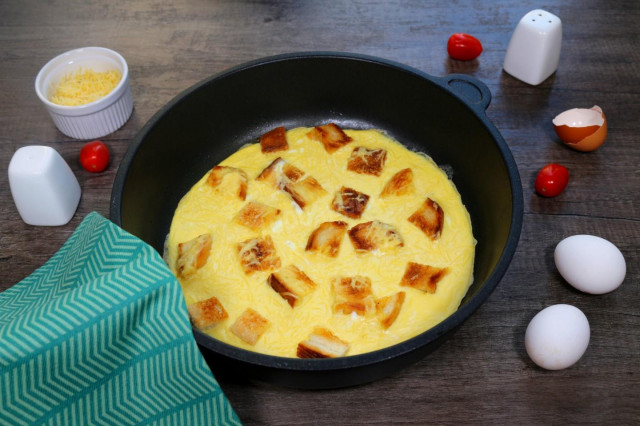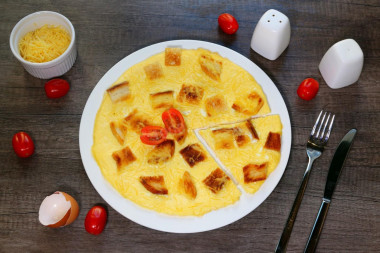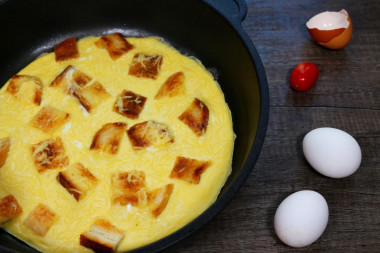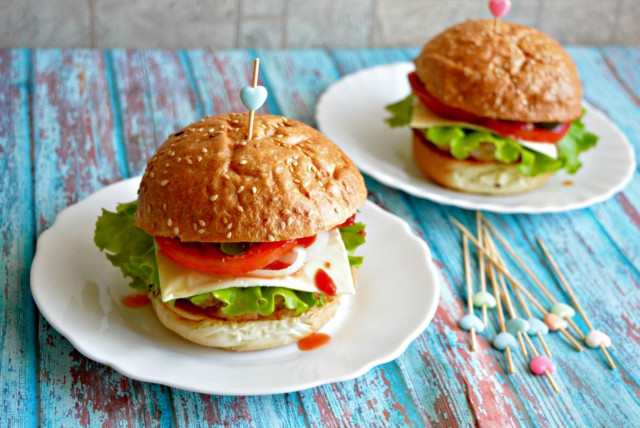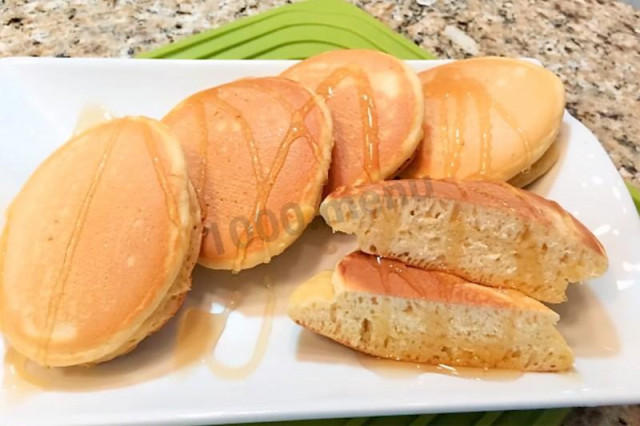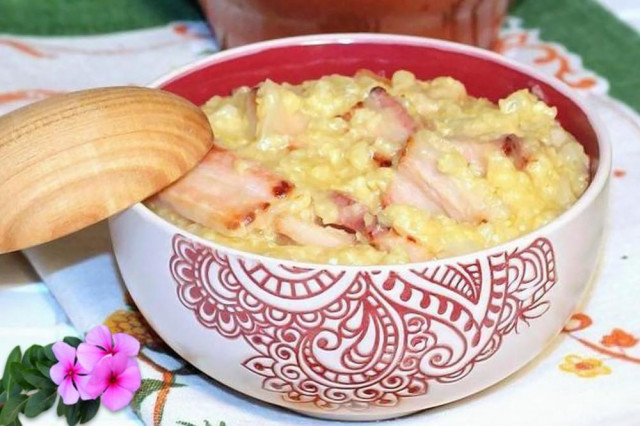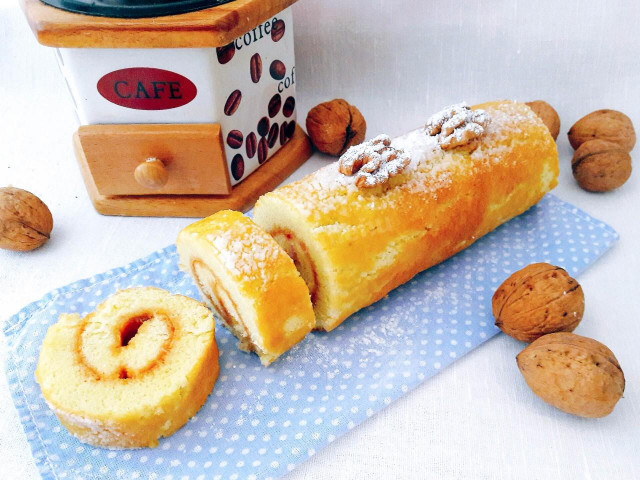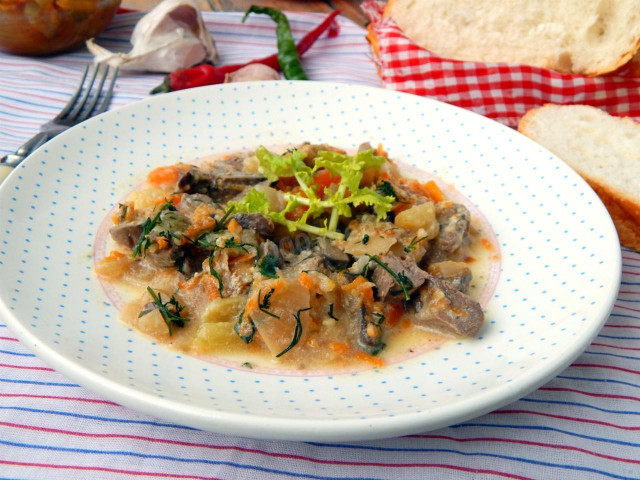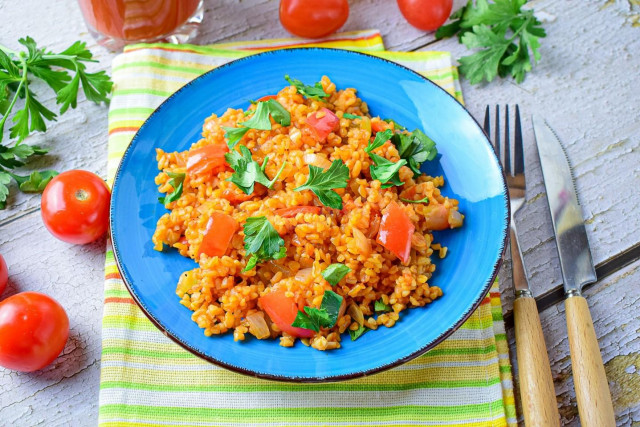Composition / ingredients
Cooking method
Prepare at once all the necessary ingredients for making a golden omelet, so that later you will not be distracted by getting something out of the refrigerator or from some shelf, everything you need will already be at hand and due to this a little time will be saved. So let's get started.
In a bowl, beat two eggs.
Now pour the entire volume of milk specified in the ingredients into the eggs.
Using a whisk or fork, shake the eggs and milk to get an egg-milk mixture with a small amount of foam. Eggs whipped with milk make an omelet light and fluffy. In fact, an omelet can be made from any number of chicken eggs, just keep in mind that 50 ml of milk is needed for each unit.
Grate the cheese on a fine or medium grater, if you grate it on a fine grater, you will end up with a more delicate taste of the omelet. Add the grated cheese to the egg-milk mixture in the container, add salt, if desired, add other spices and mix everything well so that all the ingredients are evenly distributed.
Cut white bread into medium-sized pieces, into squares or rectangles, this is not so important, because it will not affect the taste of the omelet in any way.
Take a frying pan, I used a frying pan with a diameter of 28 centimeters, because I like a thin omelet. If you want a more lush omelet, just use a frying pan with a smaller diameter.Pour vegetable oil into the pan and put the sliced bread on its bottom, evenly distributing it around the perimeter of the pan. Place the pan with bread on a high heat and fry the bread on one side for 2-3 minutes until golden brown, turn over the pieces of bread.
Now pour the omelet mixture directly onto the pieces of bread, reduce the heat to a minimum so that the omelet does not burn during cooking, cover the pan with a lid and cook the omelet for 8-10 minutes, then remove the pan from the heat and let the omelet rest with a lid for another 3-4 minutes.
If you follow the instructions, the omelet should turn out ruddy and toasted from the bottom, but at the same time the top will remain light and tender. The color of the omelet itself depends on the eggs used, namely the yolk. If it is light, then the omelet will turn out that way, and if it is orange, then the omelet will have a brighter yellow color.
Caloric content of the products possible in the composition of the dish
- Whole cow's milk - 68 kcal/100g
- Milk 3.5% fat content - 64 kcal/100g
- Milk 3.2% fat content - 60 kcal/100g
- Milk 1.5% fat content - 47 kcal/100g
- Concentrated milk 7.5% fat content - 140 kcal/100g
- Milk 2.5% fat content - 54 kcal/100g
- Chicken egg - 157 kcal/100g
- Egg white - 45 kcal/100g
- Egg powder - 542 kcal/100g
- Egg yolk - 352 kcal/100g
- Ostrich egg - 118 kcal/100g
- Vegetable oil - 873 kcal/100g
- Salt - 0 kcal/100g
- White bread - 266 kcal/100g

